AKAI CD-55 player
/ AD-1856N/ PCM-56
July 2007
I used to love
AKAI reel-to-reel players and cassette decks with three black ceramic
heads.
They were
indestructible machines 20 years ago. My ultimate teenage dream. (dry
dream that is).
So how does a CD
player look like today, being 10 years old and a top model of it's time?
Lets peek
inside...
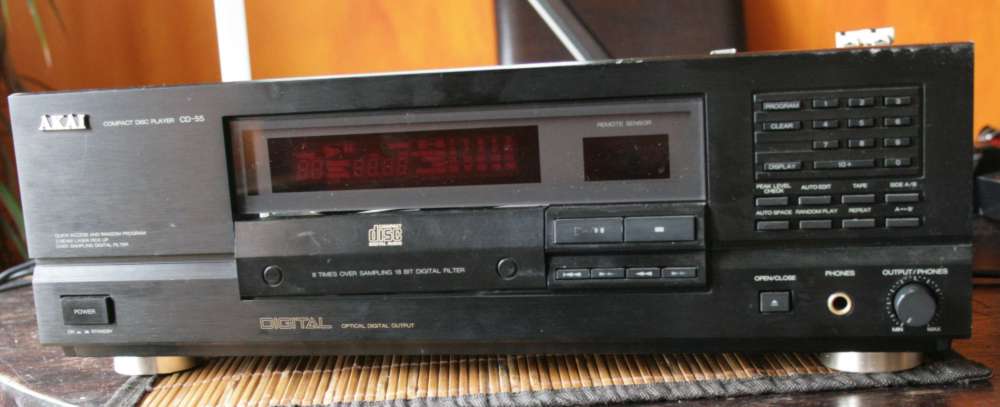
Oh yes, I am a
great pretender ... sang Rod Steward. Akai is a pretender too.
It pretends to
be BIG and HIGH but there is air inside. Nothing to justify the high
posture.
The display
pretends to be large, it has huge glass front, but the actual display
behind is small and hardly legible.
The drawer
pretends to be metal, with two huge machine screws holding
the tray face plate. This is fake, it is all one plastic mould,
including
the fake screw heads.
The writing says
18 bit digital filter, pretending it is 18 bit resolution machine, but
the dac is 16 bit.
The front panel
pretends to be metal, but in fact this is metallized plastic. Recycled
car bumpers and dustbins.
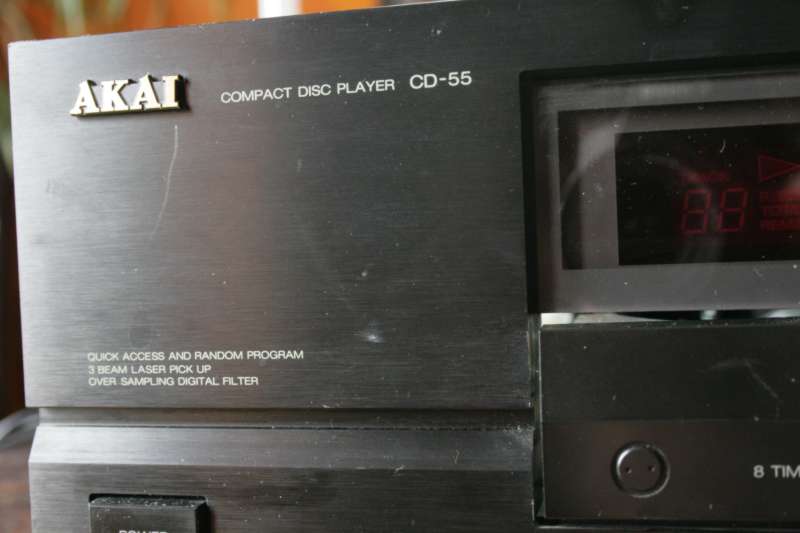
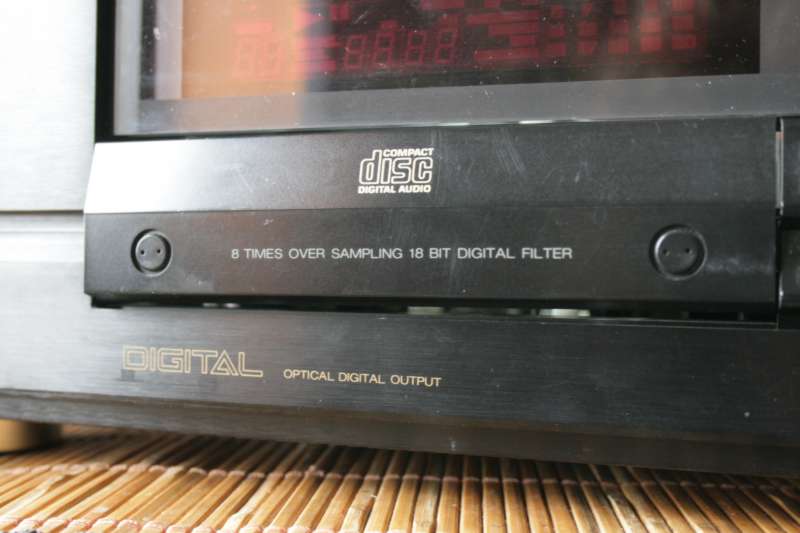

Who needs these
programming buttons on the front anyway?!? Did any of you ever use it
really?!?

The whole box is
a milk-crate type of injected mould - all plastic.
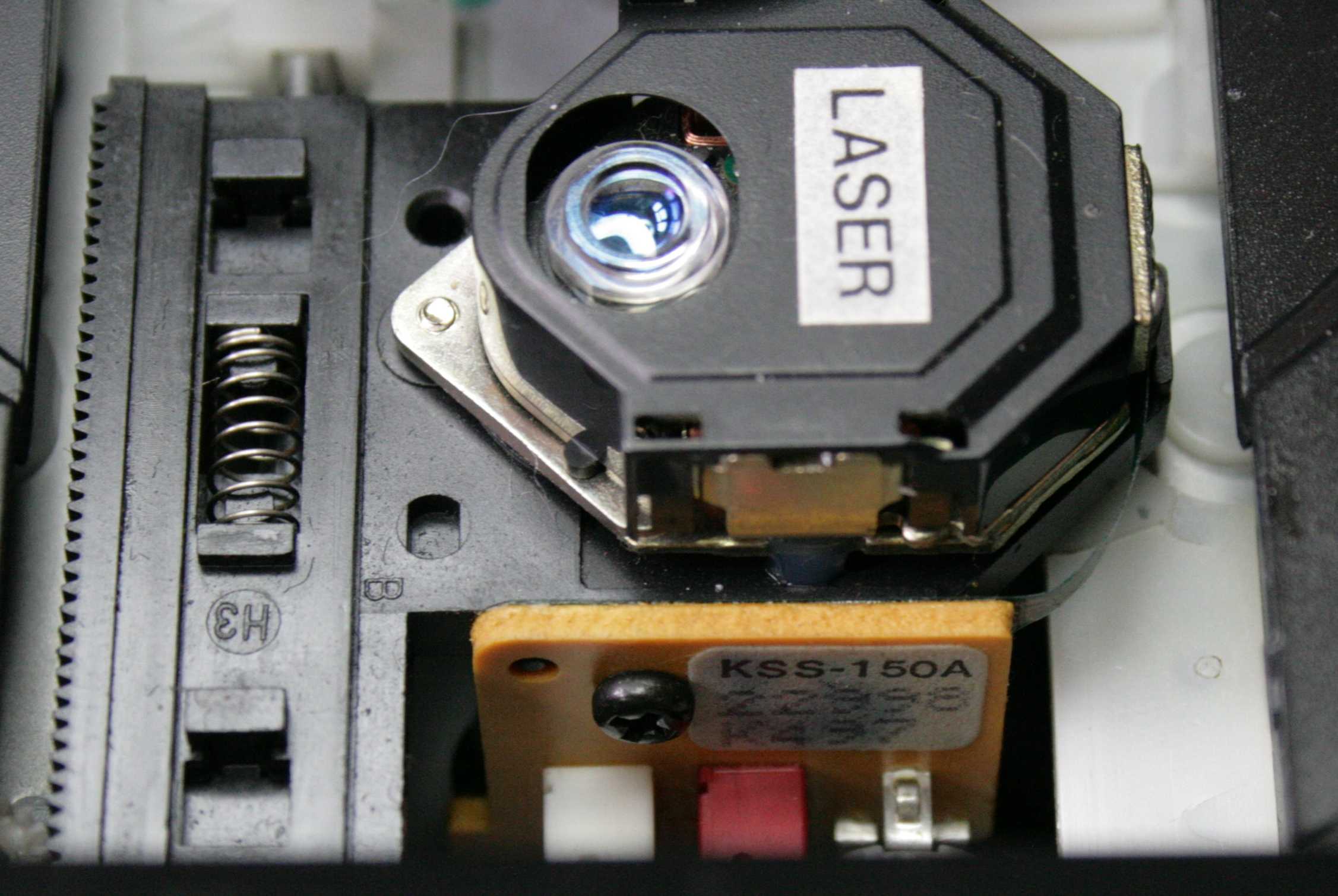
This is a very
good and reliable laser, but the mechanism is NOWHERE NEAR the real
sony
machines like in Kenwood D1000, Kenwood 9010X or Denon 2562. Not to
mention the Sony 227ESD. This is a plastic impersonation of the haal
motor drive.
The real treat
is the D/A converter (DAC)AD1856 (16 bit) from Analogue Devices - from
one of most successful DAC series - the 18XX. These are "sister" DAC's
from Burr-Brown PCM 5X series. Many people swear by their analogue and
liquid sound, as the name suggests.
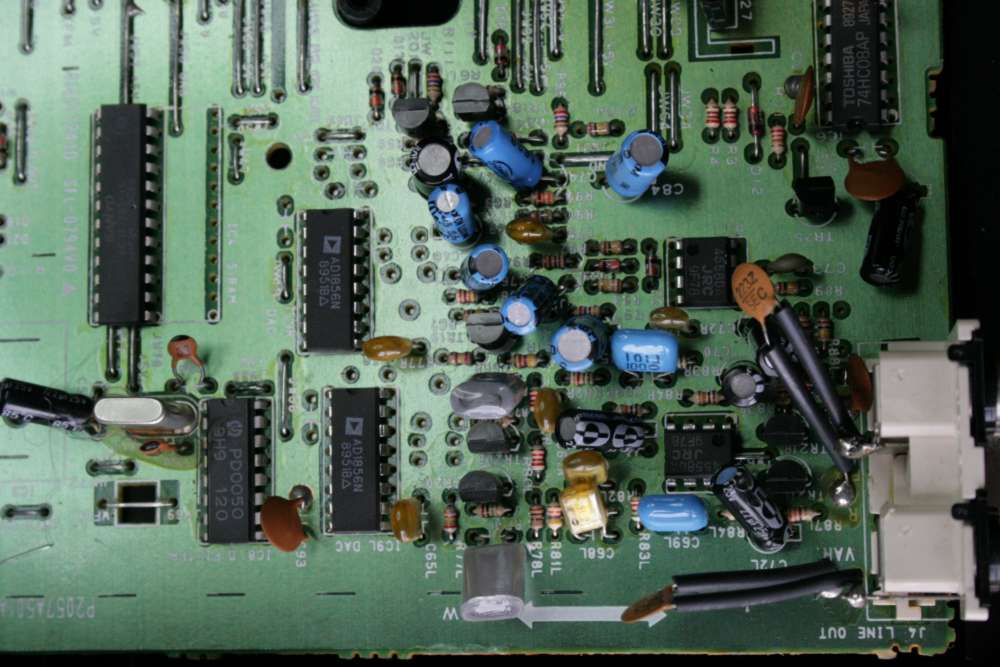
The PCB designer
from AKAI should go and get the lesson at Copland, bang/olufsen or
loewe.
This must be the
most messy looking PCB that I found in any player.
All parts are
the cheapest possible types. Like in chinese toys.
SO WHAT IS THIS
FINE DAC DOING HERE IN THIS COMPANION !!!???
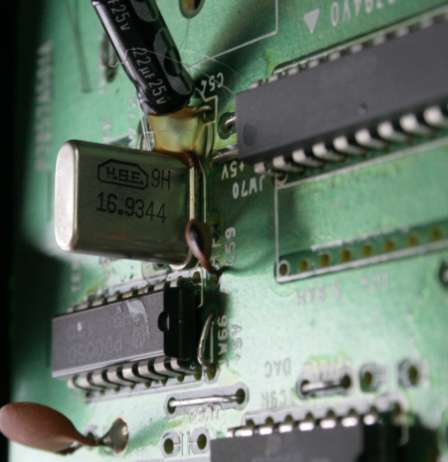
Typical japanese
"school" of clock - 16 meg not 11 like Philips.
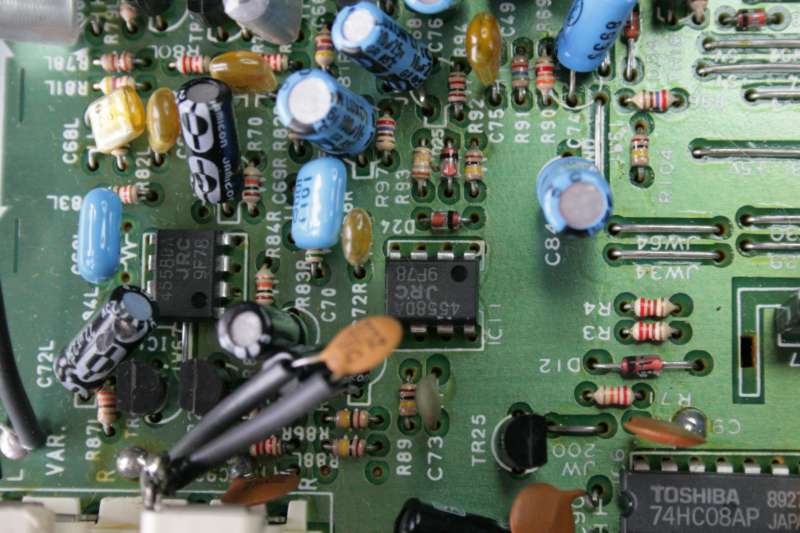
Output stage - 2
op-amps per channel. And HORROR - brown ceramic capacitors on
the RCA sockets - meaning that AKAI filters out high tones from the
signal by brutal shunting.
Boooooooo......
Akai. Shame.
BYPASS AND
LAMPIZATION
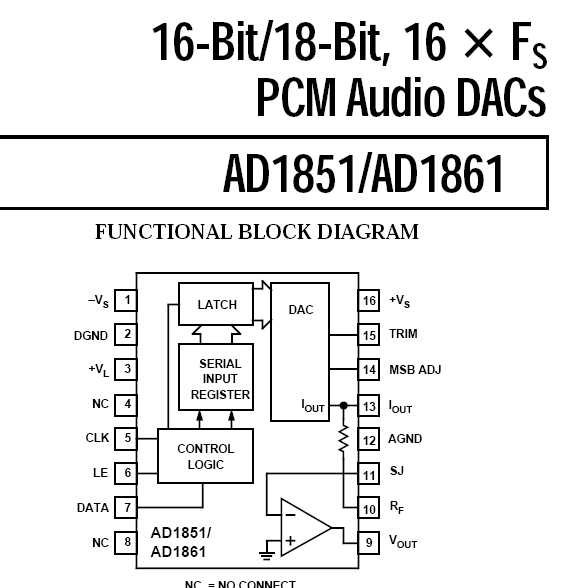
Hey, wait a
minute, this looks ... just like ... Burr Brown PCM56 and PCM61
!!! See the burrbrown below. IDENTICAL.

Funny, two great
minds think alike...
Dac description
from their white paper:
DESCRIPTION
The PCM56 is a
state-of-the-art, fully monotonic,
digital-to-analog
converter that is designed and
specified for
digital audio applications. This device
employs ultra
stable nichrome (NiCr) thin-film
resistors to
provide monotonicity, low distortion, and
low differential
linearity error (especially around
bipolar zero)
over long periods of time and over the
full operating
temperature.
WHO ELSE uses the Analogue Devices DAC chip? Look at this list !!!
ACCUPHASE
DAC10
2 x AD1853
ACCUPHASE
DC-101
6 x AD1853
ACCUPHASE
DP-55V
2 x AD1853
ACCUPHASE
DP-75V
6 x AD1853
ACCUPHASE
DP-85
6 x AD1853
AUDIO
AERO CAPITOLE
AD1853
AUDIO
ALCHEMY DDE v3.0
2 x AD1862N
AUDIO
ANALOGUE MAESTRO
AD1855
AUDIO
NOTE CD-2
AD1865
AUDIO
NOTE CD-2.1x
AD1865N
AUDIO
NOTE CD-3.1x
AD1865N
AUDIO
NOTE DAC-5
AD1862N-J
COUNTERPOINT
DA10E-AD
AD1862N
DENON
DCD-1290
2
x AD1860N-D
DENON
DCD-2060
2
x AD1861N
DENON
DCD-2560
4
x AD1862N-D
LUXMAN
D-107U
2 x AD1860
MARK
LEVINSON No 390S
2 x AD1853
MERIDIAN
507.24
AD1852JRC
MICROMEGA
CD
AD1852
MICROMEGA
CD132
AD1853
MISSION-Cyrus
Dacmaster 2 x
AD1862N
MISSION-Cyrus
dAD3Q
AD1861
MISSION-Cyrus
dAD7
AD1861
NAKAMICHI
CD PLAYER 4
AD1864N
PROCEED
CDP
AD1864
PS
AUDIO GENERATION TWO
2 x AD1860N-K
T+A
CD1230R
AD1853
TEAC
D-3 ESOTERIC
8 x
AD1862N-J
TEAC
D-700
4 x AD1862N
TEAC
VRDS-25X / XS
4
x AD1862N-
TEAC
X-1S ESOTERIC
4 x
AD1862N-J
TEAC
X-1S ESOTERIC
4 x
AD1862N-J
WADIA
23
2 x AD1865N
YAMAHA
CDX-596
AD1854JRS
YAMAHA
CDX-730E
2
x AD1860N-J
DAC
CHIP DATA
LAMPIZATION
OF AKAI
This player
required some heavy mods. I had to isolate legs 9, 10,
11
and 13 from everything else by brutal scalpel cutting of PCB. Measured
- that there is no more connection. I took the current from leg
13 and wired it by screened coax to lampizator tube socket - leg 7, and
500 Ohm (experimentally proven) to leg 9. This is "Resistor I/U
conversion" , but this time done near tube not
near DAC.
The player has
lots of space for transformer and all parts of
lampizator. Lots of freedom. Plastic body allows for easy drilling and
hot-melt gluing.
The whole work
is a pleasure.
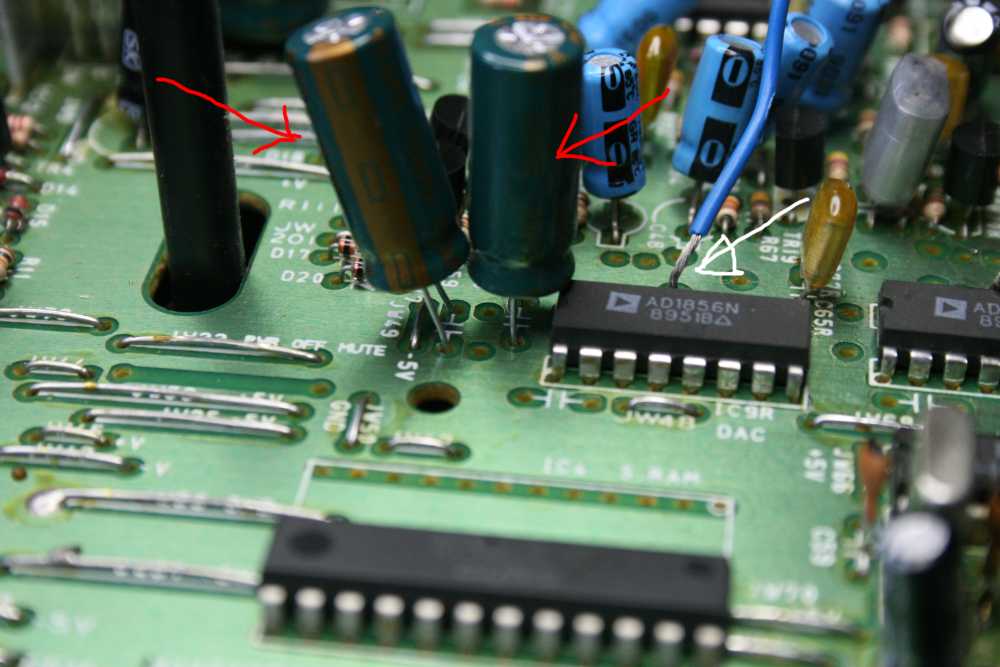
I
found silk-screen drawings on main PCB, (see red arrows) in the
proximity of DAC chips - indicating a pair capacitors but without a
capacitor in place - not mounted at all. These were at critical
locations in DAC power input. I added the LOW-ESR TEAPO caps in these
ready holes.
White arrow
shows signal stealing point - leg 13.
I also upgraded
the main capacitor after the main regulator with a low-esr and 10x size.
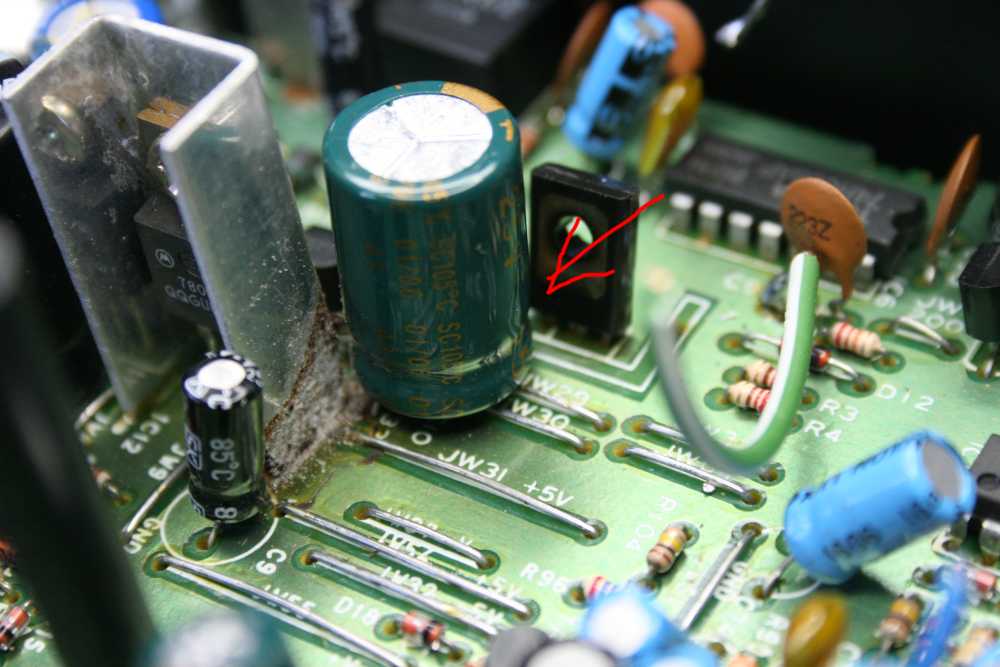
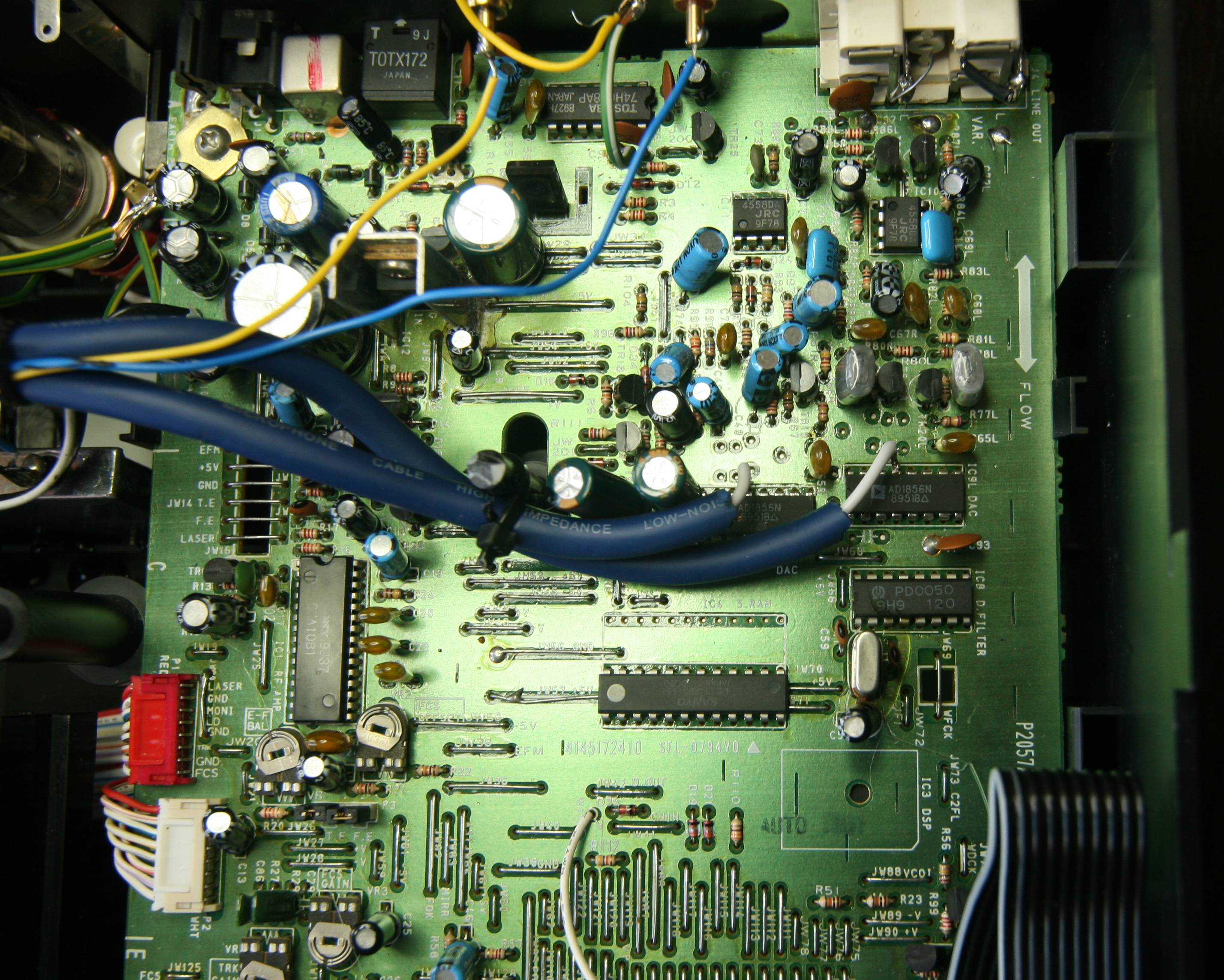

Two tubes and
two metal cans of Siemens PIO 1uF capacitors.

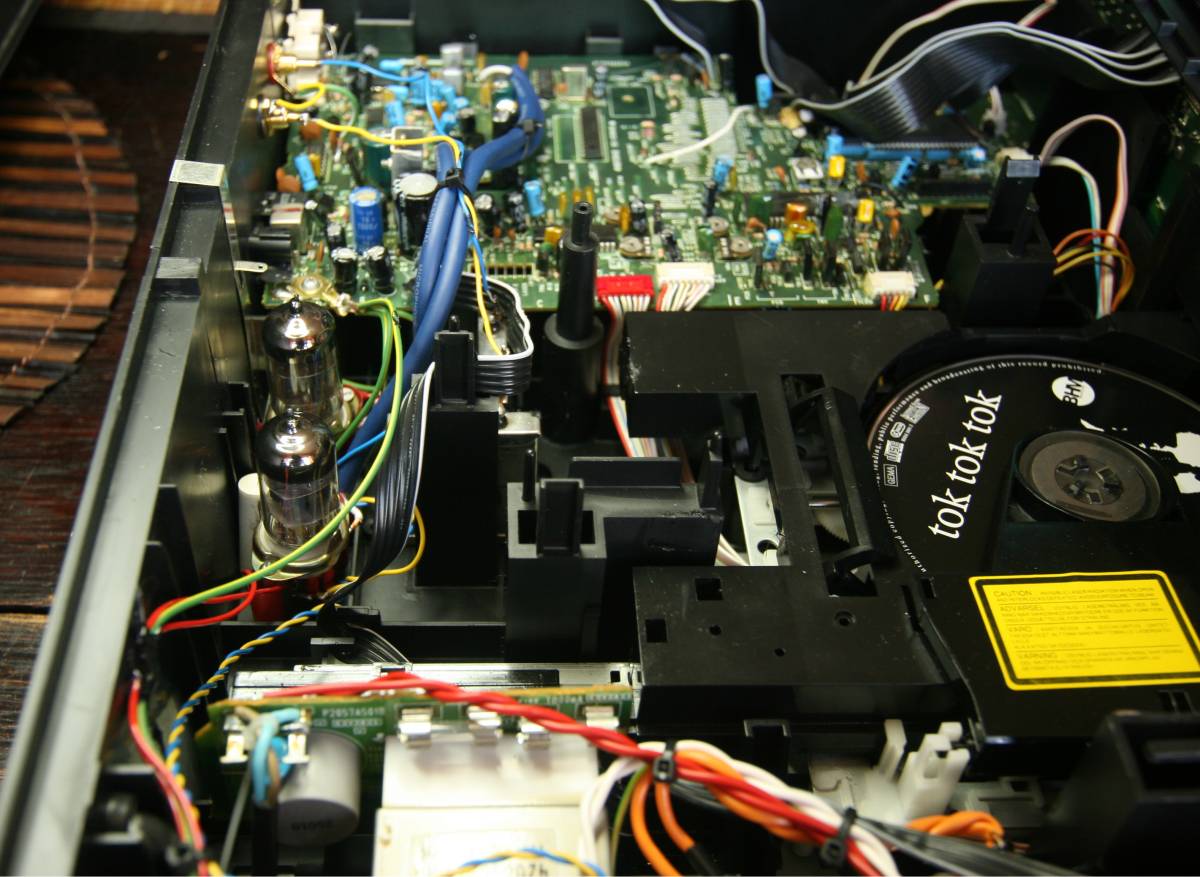

The sound
surprised me a lot. I tried the AKAI first from voltage
output legs - number 9. It sounded quite average, barely OK. From
current output leg
number 13 it changed totally. It is analog, smooth, deep, strong in
the bass, spacious etc. Not as good the TDA1541A but very interesting
indeed. Some people would probably choose Akai over the TDA players it
is that good ! Considering the 100 Euro ebay price tag of AKAI - it is
great
player. During long listening sessions it allowed me to forget
completely that I am listening to equipment and it drew me into the
music. Highly recommended.
BACK

















